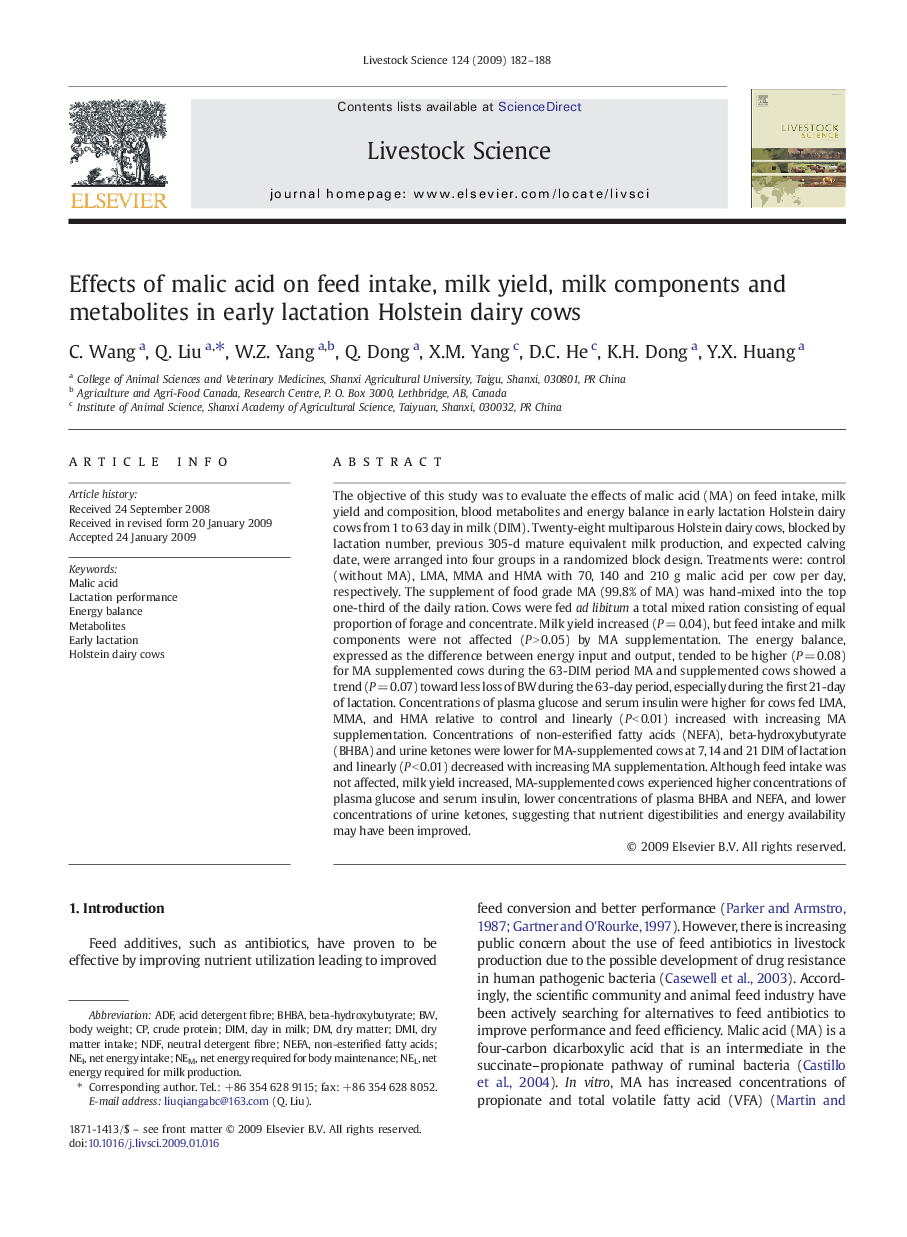| کد مقاله | کد نشریه | سال انتشار | مقاله انگلیسی | نسخه تمام متن |
|---|---|---|---|---|
| 2448056 | 1554008 | 2009 | 7 صفحه PDF | دانلود رایگان |

The objective of this study was to evaluate the effects of malic acid (MA) on feed intake, milk yield and composition, blood metabolites and energy balance in early lactation Holstein dairy cows from 1 to 63 day in milk (DIM). Twenty-eight multiparous Holstein dairy cows, blocked by lactation number, previous 305-d mature equivalent milk production, and expected calving date, were arranged into four groups in a randomized block design. Treatments were: control (without MA), LMA, MMA and HMA with 70, 140 and 210 g malic acid per cow per day, respectively. The supplement of food grade MA (99.8% of MA) was hand-mixed into the top one-third of the daily ration. Cows were fed ad libitum a total mixed ration consisting of equal proportion of forage and concentrate. Milk yield increased (P = 0.04), but feed intake and milk components were not affected (P > 0.05) by MA supplementation. The energy balance, expressed as the difference between energy input and output, tended to be higher (P = 0.08) for MA supplemented cows during the 63-DIM period MA and supplemented cows showed a trend (P = 0.07) toward less loss of BW during the 63-day period, especially during the first 21-day of lactation. Concentrations of plasma glucose and serum insulin were higher for cows fed LMA, MMA, and HMA relative to control and linearly (P < 0.01) increased with increasing MA supplementation. Concentrations of non-esterified fatty acids (NEFA), beta-hydroxybutyrate (BHBA) and urine ketones were lower for MA-supplemented cows at 7, 14 and 21 DIM of lactation and linearly (P < 0.01) decreased with increasing MA supplementation. Although feed intake was not affected, milk yield increased, MA-supplemented cows experienced higher concentrations of plasma glucose and serum insulin, lower concentrations of plasma BHBA and NEFA, and lower concentrations of urine ketones, suggesting that nutrient digestibilities and energy availability may have been improved.
Journal: Livestock Science - Volume 124, Issues 1–3, September 2009, Pages 182–188